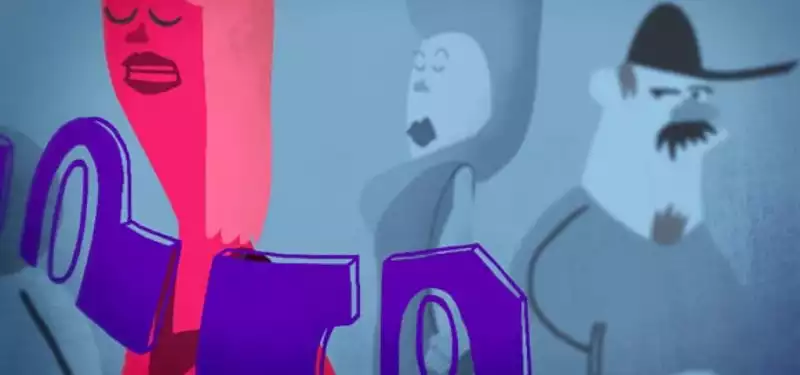Aug 21, 2013
Louis Morton's "Passer Passer."
The Cartoon Brew Student Animation Festival is made possible by its sponsor, JibJab, and their strong support for up-and-coming filmmakers.
Put on your headphones before watching "Passer Passer" by Lewis Morton, a graduate film from the University of Southern California. The film uses atmospheric urban sounds recorded in Los Angeles and Tokyo to create a dense and exciting soundscape that evokes the organized cacophony of urban life. Every sound, from the tiniest clink of a fork in a restaurant to the most menacing of car alarms, is mixed together as successfully as a single stew.
Morton matches the audio with a fresh visual style that mixes the abstract with the cartoon. Loose, fleshy animation loops and a vibrant sense of color add just the right amount of whimsy. There is a clear visual journey from day to night, and we rush from scene to scene at the relentless pace of urban life. The camera moves diagonally through space, further emphasizing the stresses of city life. By the end of the film, we return home and sleep soundly, only to begin all over again the next morning.
Filmmaker Lewis Morton comments:
It all started with a podcast in which a musician categorized the escalators in his city by sound. I thought about the vast number of sounds I encounter every day in Los Angeles and wondered if I could develop a way to categorize the most common sounds through animation. Often when I am trying to fall asleep, my car alarm goes off, and when I imagine a little man spazzing out to the rhythm of the alarm, I become less annoyed. I wanted to take all the sounds of the city, like alarms, give them personality and organize them into a system. My plan was to walk around for months recording audio, then animate what I heard.
All of the audio was recorded with a handheld Zoom H2 that I always carried in my pocket so as not to seem like a nosy pervert. I did some rough sound editing in Adobe Audition and then handed it off to the super-agile Katie Gately. I animated everything in Flash on a Cintiq. Most of the cleanup and shading was done in Photoshop. Compositing was done in After Effects.
Most of the animation was driven by audio, so I didn't know if a scene was working until I saw it with audio. Katie and I developed an interesting way of working. I would give Katie a piece of audio, and she would change it in interesting ways, giving me new ideas for animation. The animation developed organically with her sound design, especially in the second half of the film. It was definitely a collaborative effort and very rewarding, but more challenging than the traditional approach. Technically, we wanted to test how many frames were needed to make the action and characters legible, and I think we learned a lot about 2D animation techniques as a result.
I lived in L.A. and (briefly) Tokyo and soaked up the sounds of each city. In Tokyo, I zoned out at train stations. In L.A., I merged with the freeways and walked Hollywood Boulevard at night. 99% Invisible (the escalator episode), Radiolab, and the blog Adventures in Audio helped form the initial idea for this film. I was also influenced by the "City Symphony" films of the 1920s and the work of Norman McLaren, especially "Spook Sport. Spook Sport" in particular: I was also inspired by the background design of Jules Engels' "UPA," Disney's "Silly Symphony," the excellent work of my classmates, and the support of my USC faculty.
I would like to find a position at a studio where I can design, animate, and direct short films, commercials, and ideally title sequences and educational pieces. I like working in the very short format and I like to use animation to illustrate things. And no matter what, I will continue to make short films.
Website LouisJMorton.com Blog LouisJMorton.blogspot.com
.



Post your comment